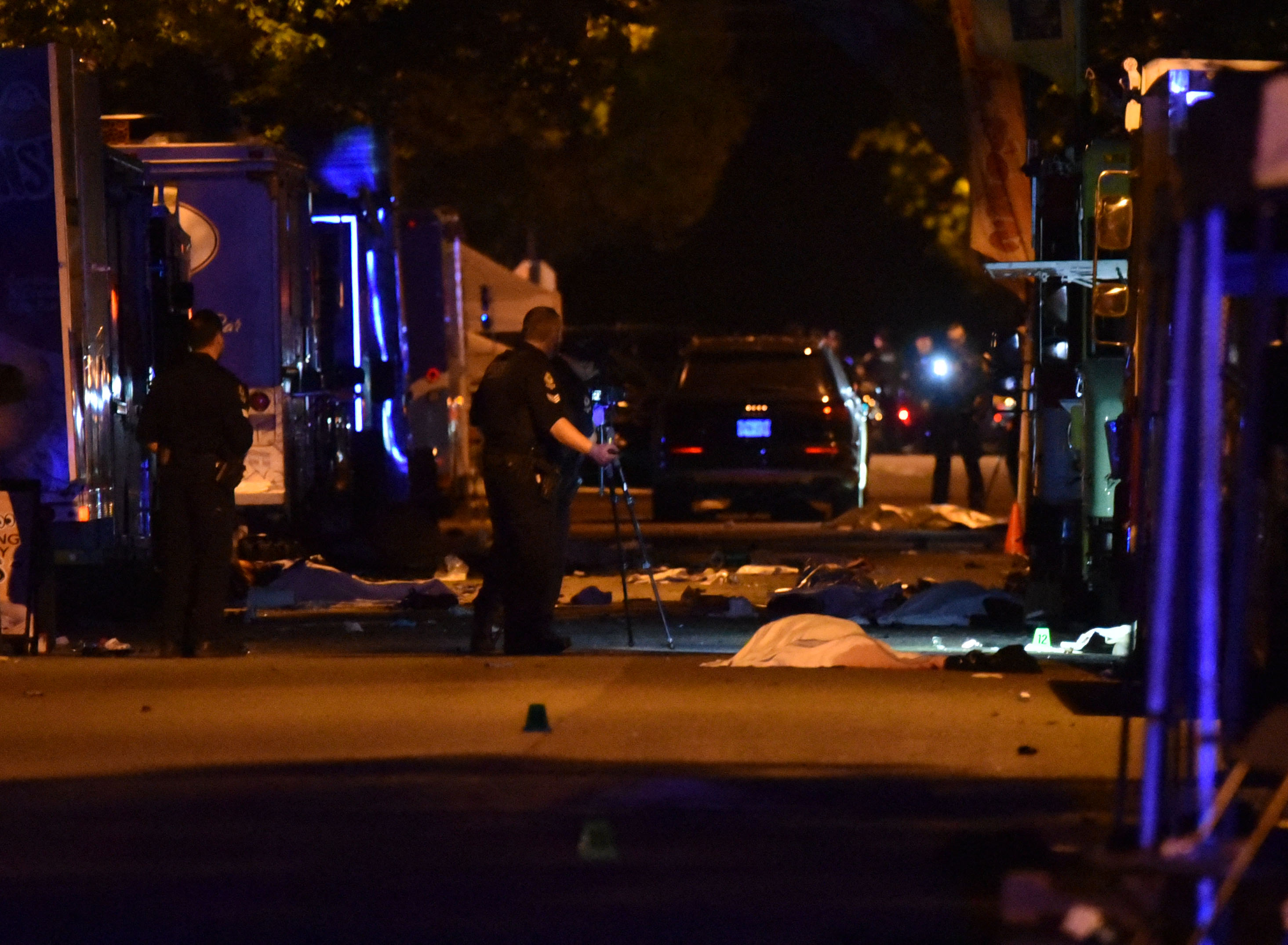Vancouver Car Ramming: Man Charged in Festival Tragedy
Vancouver Festival Tragedy: Man Charged in Deadly Car Ramming
A City Mourns: Introduction to the Vancouver Festival Tragedy
Vancouver is grappling with unimaginable grief after a horrific incident at a local festival. On Saturday night, what was meant to be a celebration turned into a nightmare when a car plowed into a crowd of attendees. As the dust settles, the community is left reeling from the devastation, with lives lost and many more injured. In the wake of this tragedy, a man has been charged with murder, adding another layer of shock and sorrow to an already heartbreaking situation. Let's delve into the details of this unfolding story and try to understand the impact on the community.
The Charges: Kai-Ji Adam Lo Faces Murder Counts
Kai-Ji Adam Lo, a 30-year-old Vancouver resident, has been formally charged with eight counts of second-degree murder following the car ramming incident. Vancouver Police announced the charges Sunday evening, signaling the beginning of a long and complex legal process. Second-degree murder implies malice aforethought, but without premeditation, which will likely be a key point of contention in the upcoming trial.
Further Charges Anticipated
The police statement explicitly mentioned that “the charge assessment is ongoing and further charges are anticipated.” This suggests that as the investigation progresses and more details emerge, Lo could potentially face additional charges related to the injuries sustained by the dozens of other victims. What will these charges be, and how will they impact the legal proceedings?
Rising Death Toll: Authorities Warn of Potential Increase
The initial reports are devastating, but authorities have cautioned that the death toll may unfortunately rise. At a Sunday news conference, officials painted a grim picture, acknowledging the severity of the injuries sustained by many of the victims. Each additional life lost compounds the tragedy and deepens the wounds inflicted upon the Vancouver community.
Suspect's Background: Mental Health Emerges as a Key Factor
In an attempt to provide some context, authorities revealed that the suspect, Kai-Ji Adam Lo, has a history of mental illness and was known to police. Mayor Ken Sim stated at a news conference, “It would appear that mental health appears to be the underlying issue here.” While this information offers a potential explanation, it doesn't diminish the horror of the event or excuse the actions that took place.
Not an Act of Terrorism
In an attempt to allay fears and prevent further speculation, officials were quick to confirm that the event is not being treated as an act of terrorism. This distinction is crucial in shaping the public's understanding of the tragedy and preventing the spread of misinformation. However, it doesn't lessen the impact on the victims and their families.
The Victims: A Cross-Section of the Community
Police described the victims as "mixed genders, male, female and young people," ranging in age from 5 to 65 years old, according to Steve Rai, Vancouver’s interim police chief. This tragic event has impacted individuals from all walks of life, leaving a void in families and communities across the city. The diverse age range of the victims underscores the indiscriminate nature of the violence.
Community Response: Grief and Support in Vancouver
The Vancouver community has responded to this tragedy with an outpouring of grief, support, and solidarity. Vigils have been organized, and support services are being offered to those affected. The strength and resilience of the community are evident in the collective effort to heal and rebuild in the face of unimaginable loss.
How Can You Help?
If you're looking for ways to support the victims and their families, consider donating to local charities providing assistance, attending community events organized in their honor, or simply offering a listening ear to those who are grieving. Even small acts of kindness can make a significant difference during this difficult time.
The Legal Process: What Comes Next?
The legal process following this tragedy will be complex and lengthy. Kai-Ji Adam Lo will face a series of court appearances, including preliminary hearings and a trial. The prosecution will need to prove beyond a reasonable doubt that Lo committed the crimes with which he is charged. The defense will likely explore the role of mental illness in his actions.
Second-Degree Murder: Understanding the Charge
Second-degree murder, as the charge currently stands, implies that Lo acted with malice, but without the premeditation required for first-degree murder. This distinction is crucial in determining the severity of the punishment he could face if convicted. The prosecution may seek to upgrade the charges to first-degree murder as more evidence emerges.
Mental Health and Crime: A Complex Relationship
The role of mental health in criminal behavior is a complex and often misunderstood issue. While mental illness is not an excuse for violence, it can be a contributing factor in some cases. This tragedy underscores the need for improved mental health services and support systems to prevent future incidents. How can we better address the needs of individuals struggling with mental illness?
Festival Safety: Reviewing Security Measures
This incident will undoubtedly prompt a review of security measures at festivals and other public gatherings. How can organizers better protect attendees from potential threats? Increased security personnel, vehicle barriers, and enhanced screening procedures may all be considered. It's a delicate balance between safety and creating an open and welcoming environment.
Preventing Future Tragedies: Lessons Learned
The most important question in the aftermath of this tragedy is: how can we prevent similar events from happening in the future? Addressing the root causes of violence, improving mental health services, and enhancing security measures are all crucial steps. It requires a collective effort from individuals, communities, and government agencies.
The Impact on Vancouver: A City in Mourning
This tragedy has had a profound impact on the city of Vancouver, leaving a lasting scar on the community. The emotional wounds will take time to heal, and the memories of those lost will never be forgotten. Vancouver is a resilient city, and it will emerge from this tragedy stronger and more united.
Conclusion: Remembering the Victims and Moving Forward
The Vancouver festival tragedy is a stark reminder of the fragility of life and the importance of community. A man, Kai-Ji Adam Lo, has been charged with murder after a car ramming incident claimed the lives of 11 people and injured dozens more. While the investigation is ongoing, the focus remains on supporting the victims and their families, as well as understanding the underlying factors that contributed to this horrific event. It’s essential to remember those who were lost, offer support to those who are grieving, and work together to prevent similar tragedies from occurring in the future. Let this event serve as a catalyst for change and a call to action to create a safer and more compassionate community for all.
Frequently Asked Questions
- What are the current charges against Kai-Ji Adam Lo? He is currently charged with eight counts of second-degree murder, but police anticipate further charges may be added as the investigation continues.
- Was the Vancouver car ramming considered an act of terrorism? No, authorities have confirmed that the event is not being treated as an act of terrorism.
- What is the age range of the victims of the car ramming? The victims ranged in age from 5 to 65 years old.
- How can I support the victims and their families? You can donate to local charities providing assistance, attend community events organized in their honor, or simply offer support to those who are grieving.
- What is second-degree murder? Second-degree murder implies malice aforethought, but without the premeditation required for first-degree murder. It is a serious charge with potentially severe consequences.


